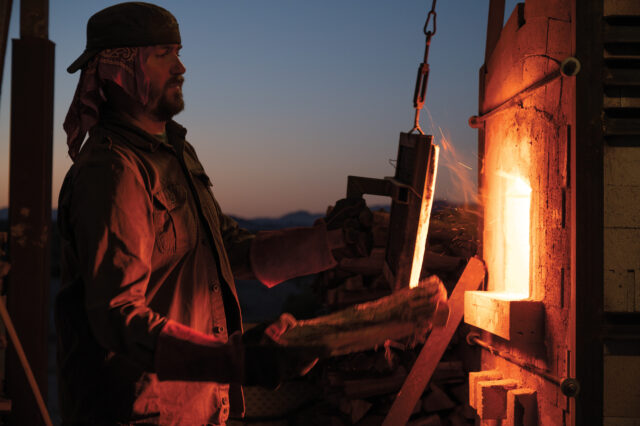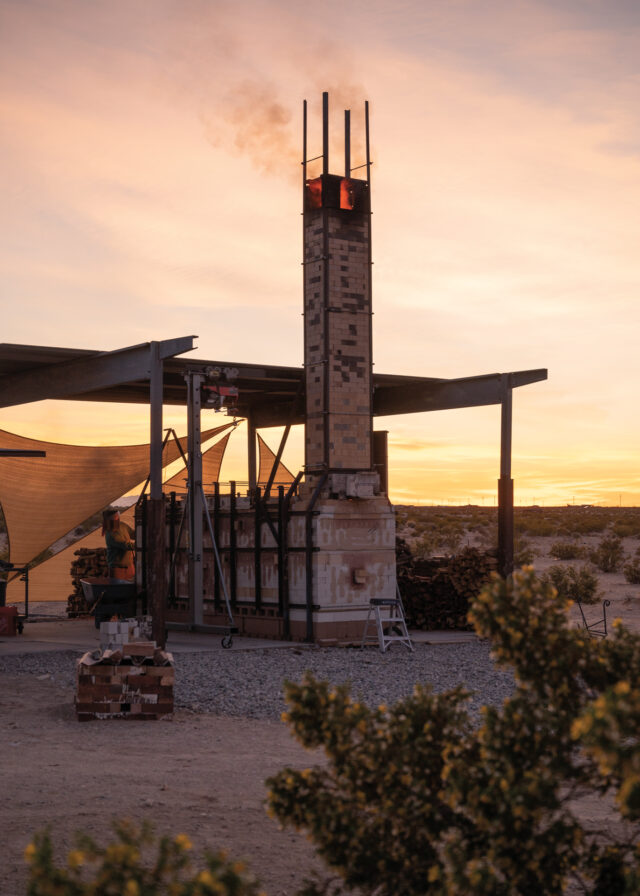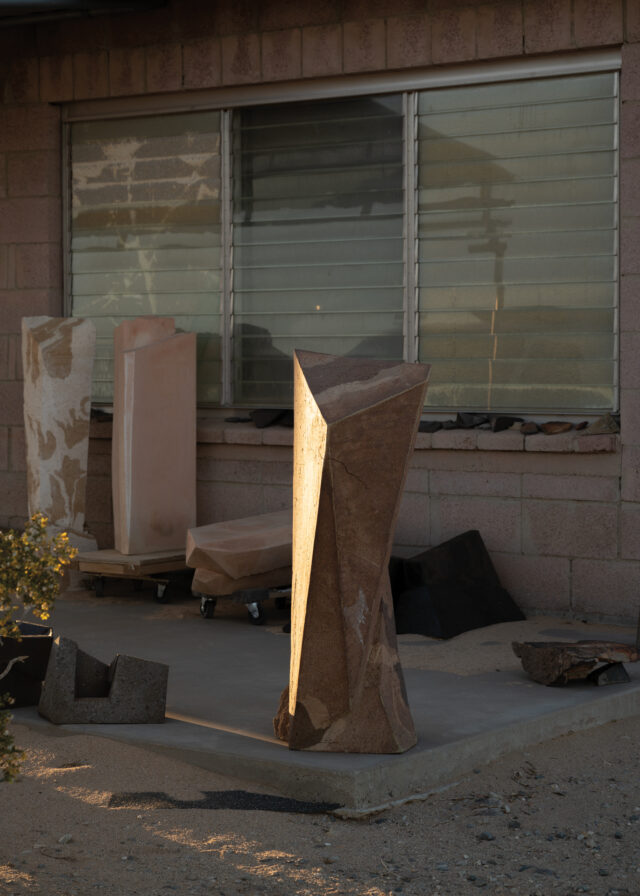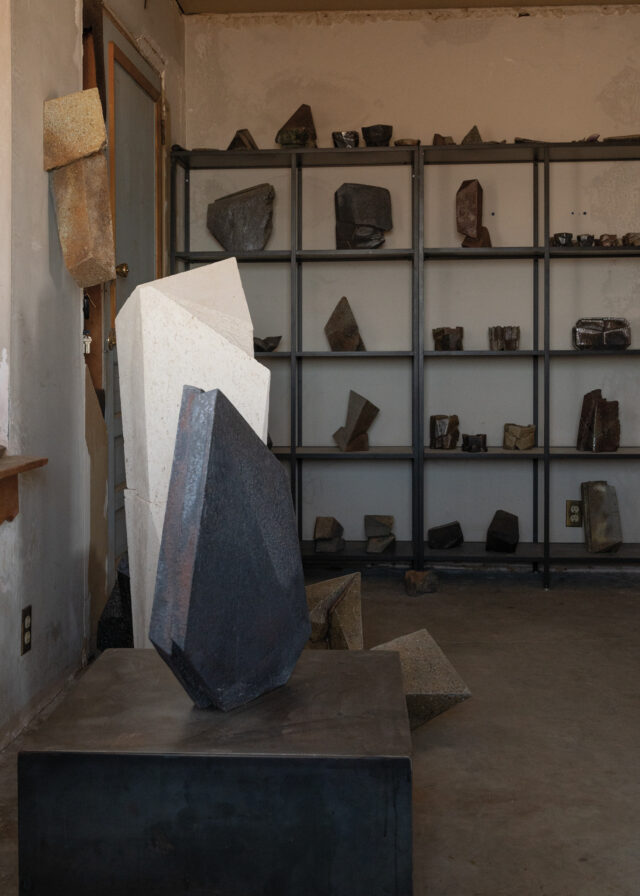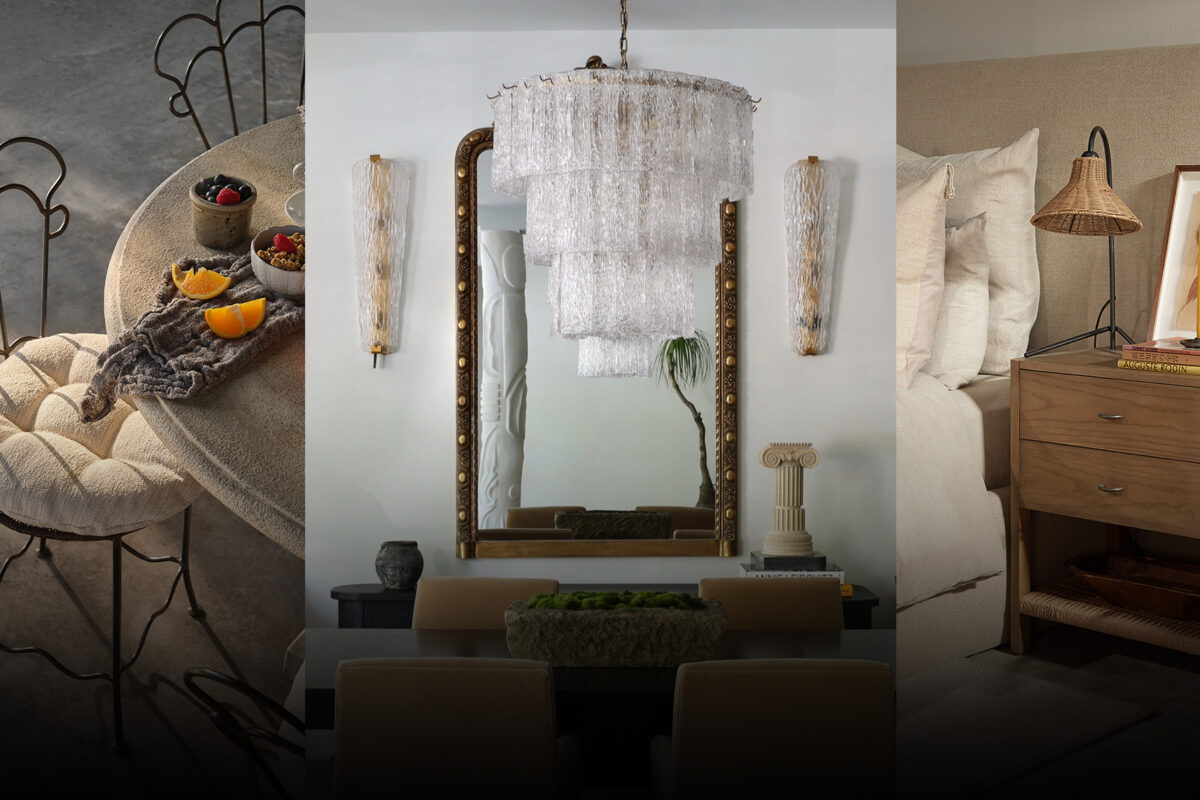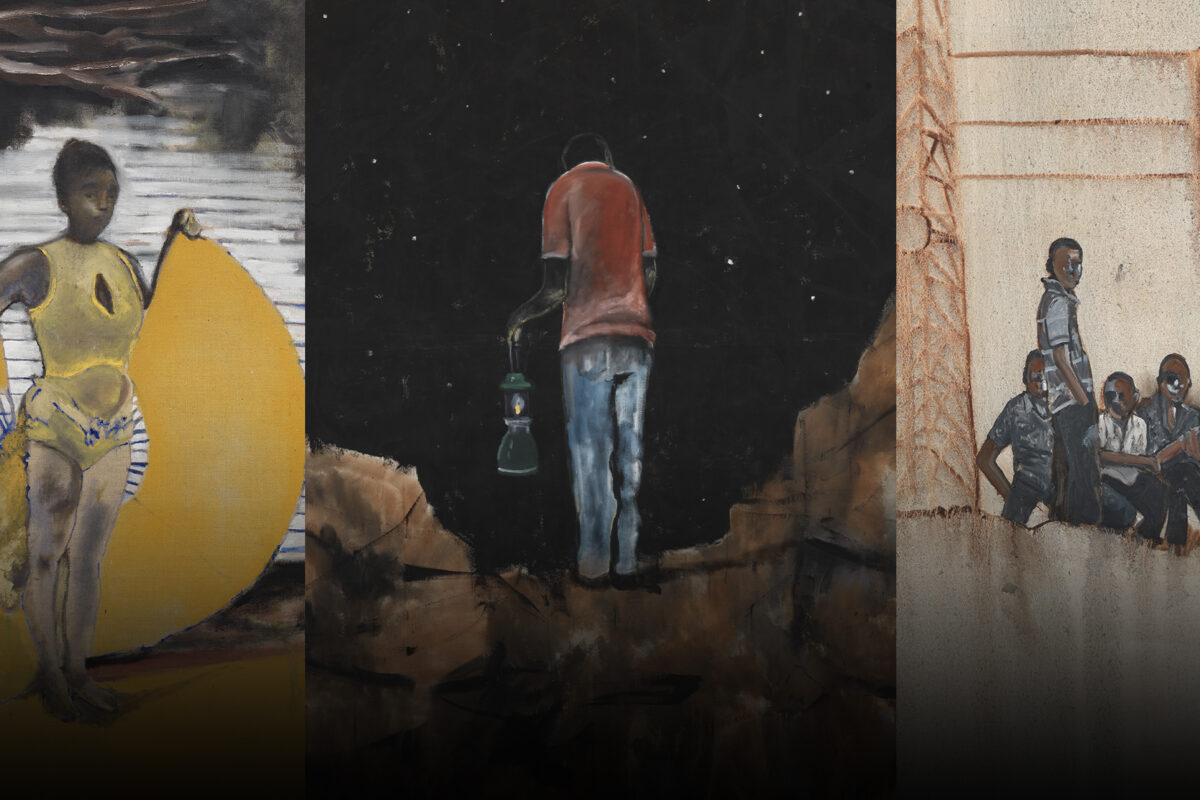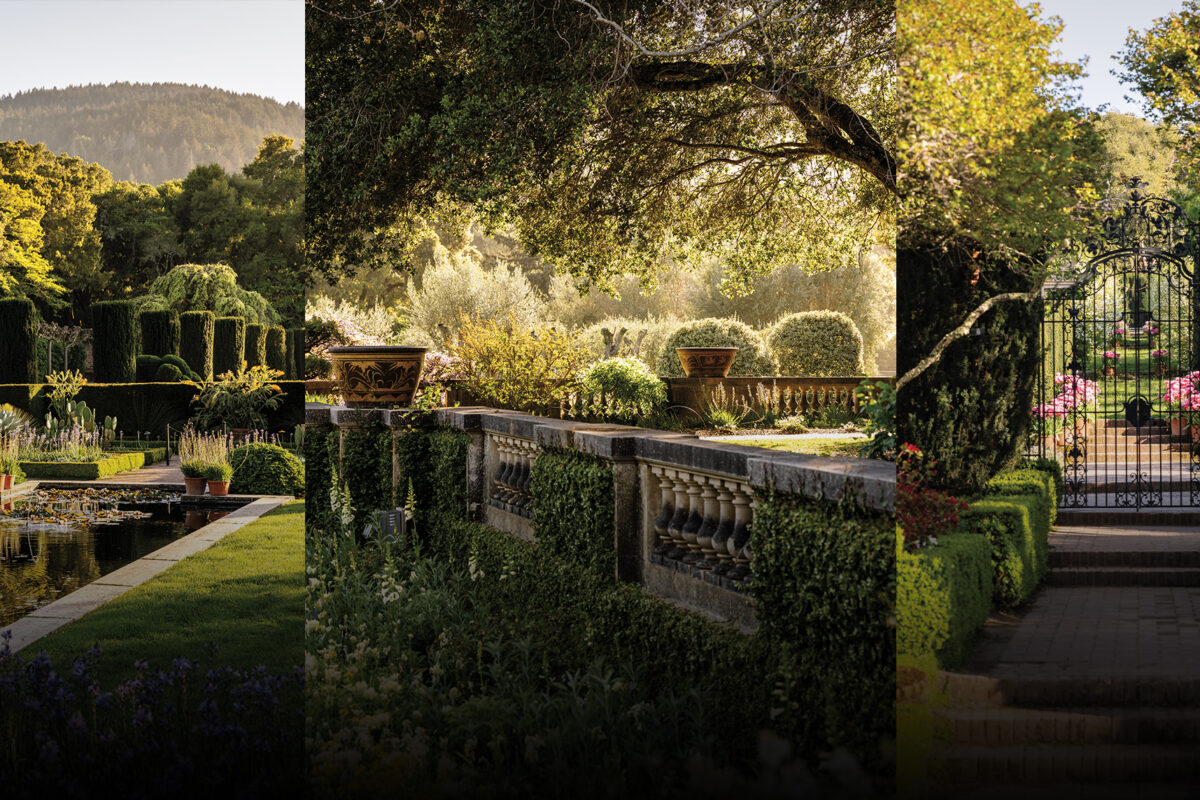Using ancient techniques, the artist fires his sci-fi inspired clay creations in a hand-made kiln in the dead of night
Words by CHRISTINE LENNON
Photography by BRIAN WULF
A desert night.
On the outskirts of Twentynine Palms, in the hush of a dark desert night, the wood-fired kiln at the studio of ceramicist Jonathan Cross radiates with 2,300°F heat. At five-minute intervals, six logs are fed to the flames to maintain the searing temperature necessary to fire his cubist, somewhat brutalist pieces — 24 hours a day for three straight days.
“Before I could hire assistants, I would beg the neighbors to come over to help out for four hours so I could sleep,” says Cross. “The first firing of the season happens when it’s cool enough in November and then continues through the winter. It’s just been a part of me for a long time, since my second child, who is 13, was born. It’s not like normal life.”
Normal life, for Cross, is back home in Pasadena with his wife and four children, ranging in age from 8 to 16. Three days a week, he’s on Dad Duty. The other four he’s at the studio, where he carves angular, rugged pieces out of solid blocks of clay, hacking into the sides with a machete, glazing to achieve an aged look synonymous with his work, and firing using this centuries-old technique.
“It’s basically a 600-square-foot cinder block cabin on a five-acre plot,” he says. For eight years, he rented from a relative who was happy to have Cross as a caretaker of the land. Cross purchased the property last year. He has built two kilns, one wood and one gas. The dystopian, Mad Max feel of the place appeals to Cross.
Wood and gas kilns.
“I do create these forms that have a futuristic look, a little Transformers, a little post-apocalyptic, Philip K. Dick sci-fi, where the vision of the future is worn down, with broken edges,” he says, “but I’m also very influenced by the ancient world.”
Growing up in Dallas, Texas, Cross fell in love with a collection of vintage National Geographic magazines dating back to the 1930s that his family inherited from his great-grandparents. Images of archeological digs and stories about unearthing the relics of ancient civilizations struck an internal chord.
“There seems to be a continuity with these basic forms — cylinders, pyramids, cubes — whether it was from the Viking age or Japan,” he says. “A lot of that stuff was decorated and painted when it was made, but in its current state it’s very plain, with that patina that’s created over time, which is what I do with firing and glazing techniques.”
During high school, Cross spent his summers building fences with his father and grandfather. Studying fine art at the University of Dallas and laboring in 100°F summer heat prepared him for his rather unique artistic path. When he came to California, following his college girlfriend (now wife and mother of his children), he took odd jobs as a barista and building floats for the Rose Parade before he landed his first dream job.
“I do create these forms that have a futuristic look”
JONATHAN CROSS
Cross’ aging cinder block cabin.
“I got a job working at Gemini GEL, where they make prints for blue chip artists like Robert Rauschenberg and Richard Serra,” he says. “I was in my early twenties when I was part of a team that worked with Serra, helping him select and develop which prints he would make. He was 65 and just running circles around me, mentally and creatively. I knew I would never become a true artist as long as I was working for other people.”
Another of his passions, collecting specimen cacti, led him to develop his work with clay. Cross couldn’t find minimal vessels for his plants, so he made them himself. Eventually he went to graduate school at Arizona State to develop his technique. His smaller goods, like tequila cups and tea bowls, are now available in Los Angeles at Lawson-Fenning on Melrose. More recently, The Future Perfect began selling his sculptural stools and side tables. The works skirt the line between art and commerce. It’s a push–pull relationship Cross has made peace with.
“That’s why I use the word utilitarian instead of functional. Art still serves a function, but it’s more esoteric,” he says. “In my heart, I do value that a little more, but it’s a nonsense game that I play. Is there more value in making a cup or making a sculpture? For me it fulfills the same kind of joy. Sometimes it’s fun to have a purpose to a piece so you can break down some barriers.”
“The mystery of God’s creation is more prevalent when you get out of the city and you’re surrounded by the wonders of animals and plants, and how the rain interacts with those plants,” he says. “There’s a mental energy that exists there that elevates my spiritual life.” jonathancrossstudio.com.
Cross’ work ranges from cups to 300-pound sculptures.
Feature image: The kiln fire is fed at five-minute intervals for three days straight.
This story originally appeared in the Fashionable Living 2023 issue of C Magazine.
Discover more STYLE news.
See the story in our digital edition

